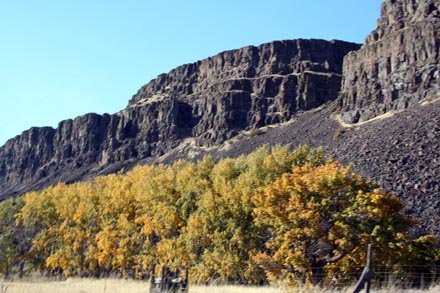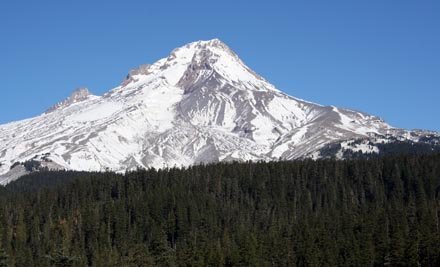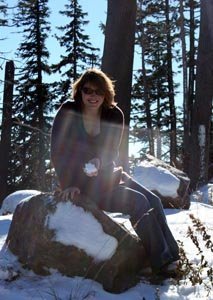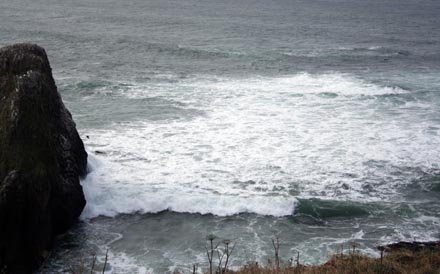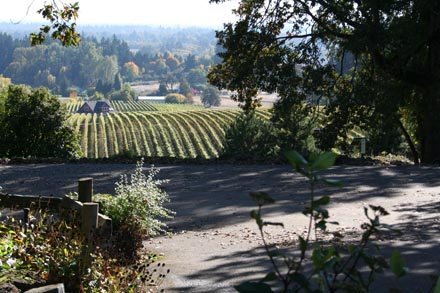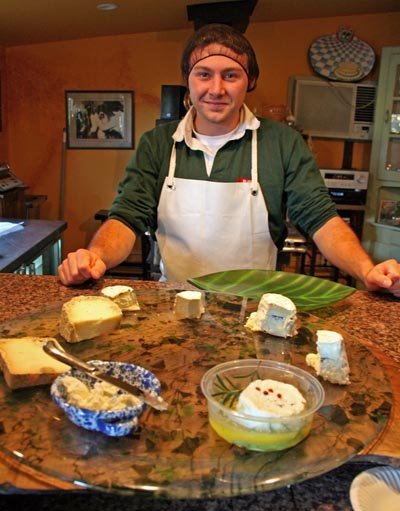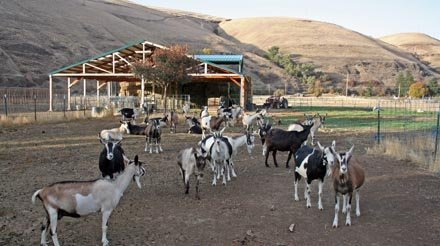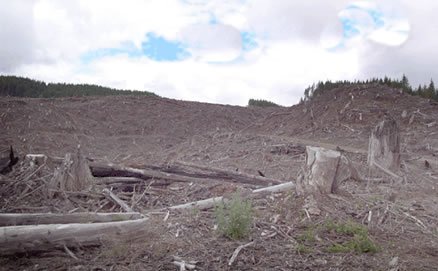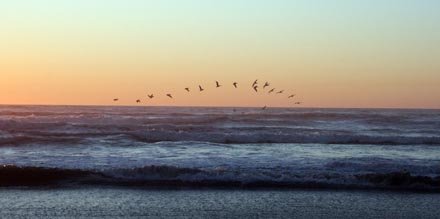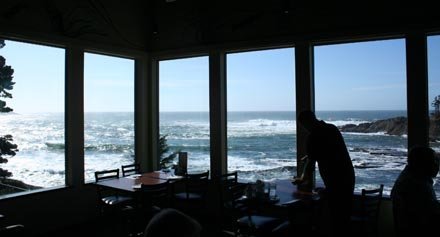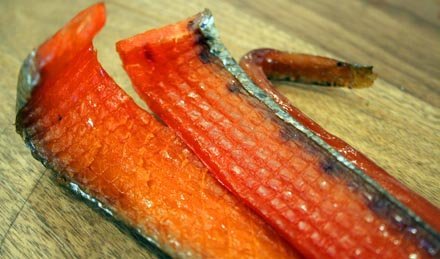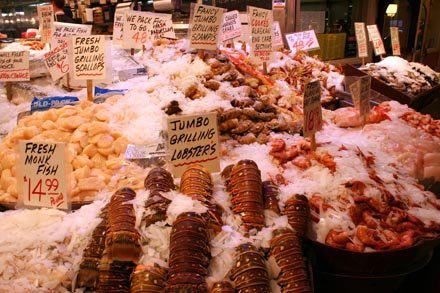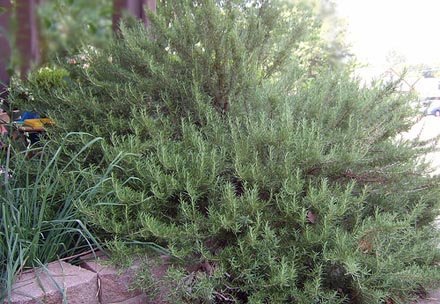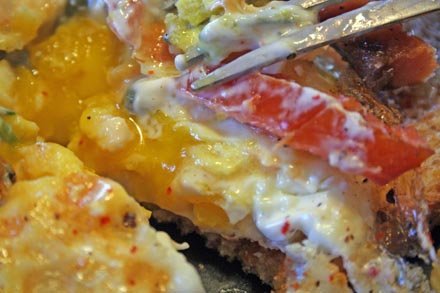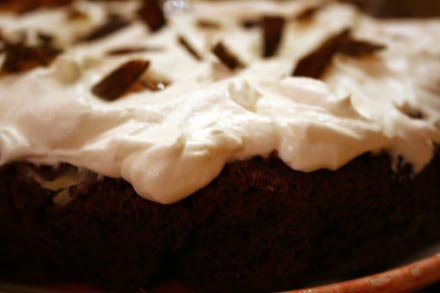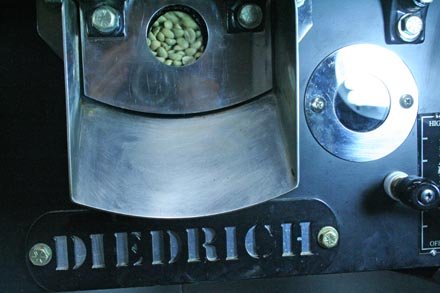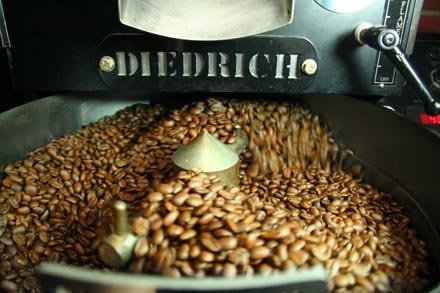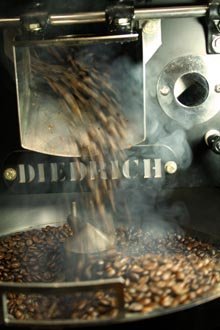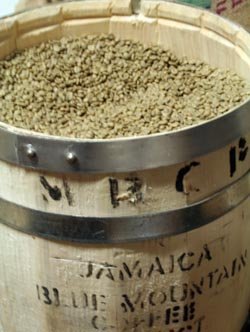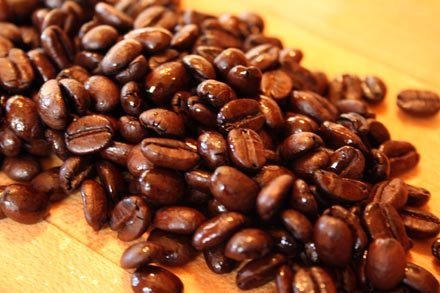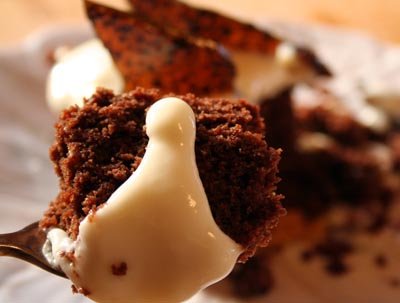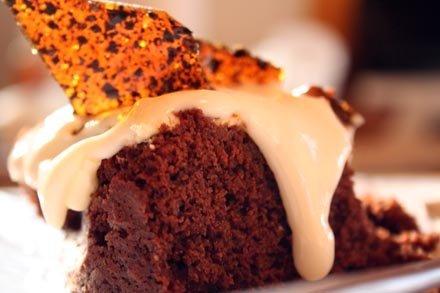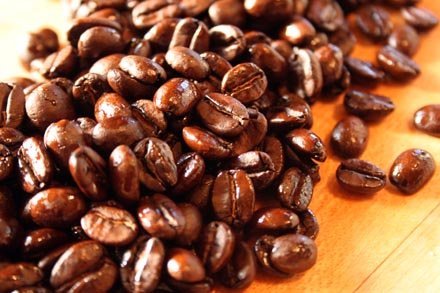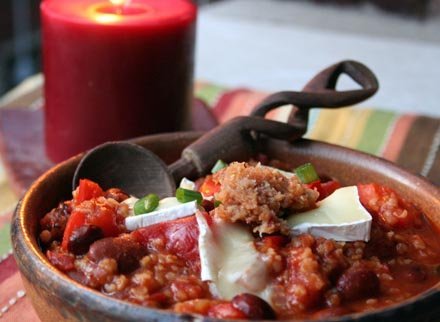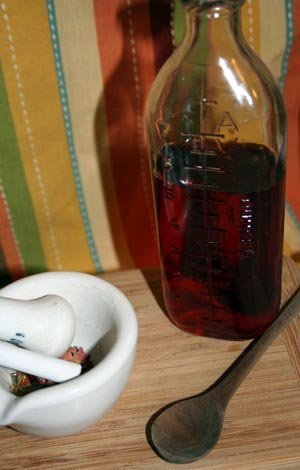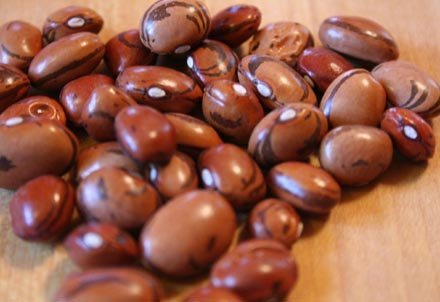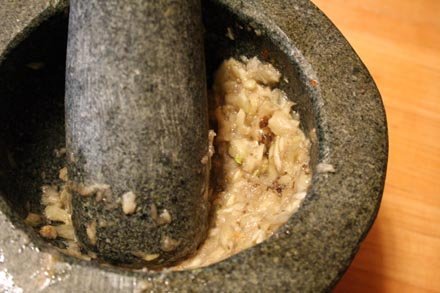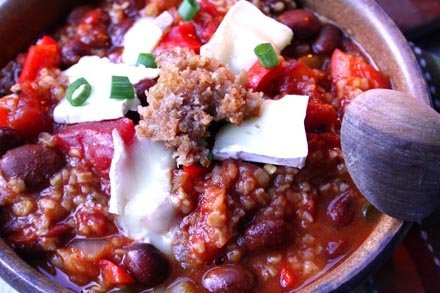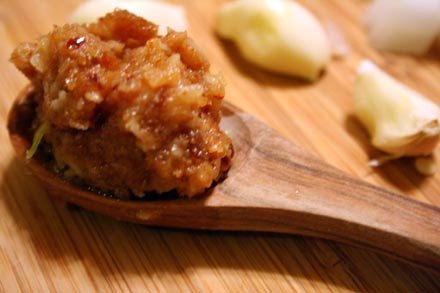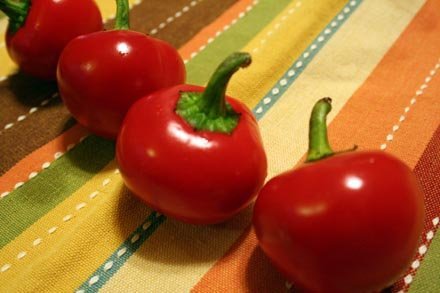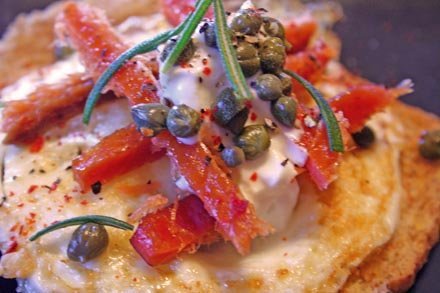 (pescetarian, gluten-free option)
(pescetarian, gluten-free option)
Say you were on holiday in the Pacific Northwest for ten days or so. Say that in the matter of just two of those days, you had traveled through temperate rainforest, desert, mountain snow and coastal sands.
Say too that the region was banking on the fact that in a few years, global warming would turn Napa Valley way too arid for viable vineyards, and so grapes were taking root and vineyards multiplying all over Washington and Oregon. Imagine how ironically sobering this would be, and how it would make your heart stop each time an enthusiastic winemaker would pronounce this prediction. But also imagine the beauty of the vine-embraced landscape, and how certain views also made your heart stop. Nothing is black and white in this world.
Next, imagine that on the outskirts of the desert, just before the climate switched to something more hospitable, you stumbled upon a genuine French fromagerie, where a hundred happy goats and sheep lived and roamed and gave up their milk for chevre, causse noir, larzac and other artisan cheeses. Say it was called Monteillet Fromagierie, this cheese farm, and imagine that a real French boy named Luc (or Jacque or Adrien) was the intern who delicately served up a platter of cheese so rich, sweet, smelly and complex that you almost didn’t recognize it as cheese. Say at that same fromagerie you bought brown eggs that the raucously free-range hens had laid (duck eggs were out of season, alas).
Say, driving along the coast of Oregon, the aftermath of the forest clearcutting was the likes of which you’d only ever seen in a post-nuclear annihilation sci-fi film. You knew it was a serious problem, but seeing it like that, the contiguous acres of lifelessness made you feel as if you were the only person left in the world. Imagine that when a hawk then swooped across the road, its sudden and unexpected vigor rising out of that stark landscape brought your car to a momentary halt, not to mention your heart.
Picture, once you resumed your drive, that the landscapes wove together for miles, the clear cuts followed by lush forests, until finally you were hugging the coast, where the sea’s feisty waves surged against the rocks under an insistently sunny sky. Say the raucous call of the seagulls was inescapable and oddly soothing.
Suppose you’d managed to get ruined in one sitting by a fabulous bowl of smoked salmon chowder, at a restaurant that had a view so beautiful that they could have served up meatloaf and you’d have been thrilled? Imagine that though, gazing out that window, you almost forgot you were there to eat. But then the food arrived, steaming salmon and crispy crab cakes, and it was, perhaps, the best seafood you could recall having eaten. It’s possible that after that meal, you’d have salmon on the soul.
Next, say fresh salmon, which was making a bit of a comeback in the Pacific Northwest after a season of environmentally-minded fishing restrictions, was still available all over the coast, even if it had been caught wild further north. And what if you couldn’t help but buy some of the smoked salmon strips from the Pike Place Fish Market, and it was, truly (sorry Claudia, but it is. Say it with me), the bacon of fish? Perhaps when you purchased the salmon, something far away and foresightful planted the vision of fresh crème fraiche, so you dutifully shook things in a jar and set to finishing overnight without knowing why, since you were traveling and didn’t have a place to cook.
Visualize, in the presence of all this great fish, Seattle’s rosemary growing like sumac – bushy, robust, unstoppable. Say that Seattle was also the place where you finally got access to a kitchen, early one morning. Finally, imagine that since you were on vacation, you weren’t really sticking with the bean theme.
The only possible thing to do then, would be to gather all this wonderful stuff you’d collected and improvise a beautiful, smoky, peppery fried egg on toast with the bacon of fish and capers and rosemary-gone-wild, and a spoonful of crème fraiche to finish, for one decadent, no, perfect, breakfast.
Just like so.
The Recipe
Beanless Egg on Toast with Smoked Salmon, Capers, Rosemary and Crème
(Serves four)
1 tablespoon olive oil
4 brown, local eggs
4 slices whole wheat bread, toasted
1 tablespoon butter
2 tablespoons capers (seems like a lot, I know, but hey, they’re the new wonder food)
8 ounces smoked salmon strips (seems like a lot, I know, but hey, they’re really tasty!)
2 generous sprigs of fresh rosemary
Scant pinch of hot red pepper flakes – ancho or aleppo are good
Fresh ground black pepper and sea salt
Fresh crème fraiche (recipe follows)
Over medium heat, add olive oil to a large non-stick skillet. Crack the eggs into the skillet, one at a time, and let each one heat slightly before adding the next one to prevent the egg whites from running into one another. Let eggs cook for 2 to 3 minutes, then using a spatula, very carefully flip the eggs over onto the yolk side and let cook another minute or two. You want the egg whites to be solid and opaque but the centers to still be jiggly.
In a separate skillet and at the same time, warm the salmon strips in a small amount of olive oil. Remove from heat when warmed and softened, and slice into thin strips.
Spread a thin layer of butter over each slice of toasted bread. Place one fried egg on each slice. Place several strips of salmon over each egg, then spoon a half-tablespoon of capers onto each serving.
Hold each sprig of rosemary at the top (thin end), and run your fingers over the leaves to shuck them from the stem. Divide the pile into four and sprinkle equally onto each egg. Place a generous dollop of crème fraiche onto the eggs, and finish with freshly ground pepper and sea salt.
Homemade Crème Fraiche
3 cups heavy cream
1/3 cup buttermilk
In a large glass jar, combine cream and buttermilk and stir very lightly. Let sit overnight in a warm, dry place. In the morning, stir and refrigerate.
Recipe for environmental change
Say you wanted to know more about sustainable wood products to help prevent some of the clear cutting.
Say you wanted to help preserve California wines (while still celebrating Oregon and Washington offerings) by decreasing your carbon output.
Or imagine that when you were hungry for fish, you wanted to know which of your choices would do the least harm to the ocean’s ecosystems (this is a particularly cool service, and appeals to those addicted to texting).
These are some very preliminary and rudimentary excursions into complex issues, but I hope you’ll give these sites a glance. There’s so much astonishing beauty in this world, and it’s worth protecting, for its own sake yes, but also because without the intricate ecosystem it represents, we simply can’t survive. I’ll be writing more about these issues soon, in a different forum and format. In the meantime, email me directly with your thoughts and questions.
And for those of you inspired by salmon, let me leave you with a poem I love. It was written by David Whyte, a British-American poet and marine biologist.
Song for the Salmon
For too many days now
I have not written of the sea , nor the rivers
nor the shifting currents we find between the islands.
For too many nights now
I have not imagined the salmon
threading the dark streams of reflected stars
nor have I dreamt of his longing
nor the lithe swing of his tail toward the dawn.
I have not given myself to the depths to which he goes
to the cargoes of crystal water cold with salt
nor the enormous plains of ocean swaying beneath the moon.
I have not felt the lifted arms of the ocean
opening its white hands on the seashore
nor the salted wind, whole and healthy
filling his chest with living air.
I have not heard those waves fallen out of heaven on to earth
nor the tumult of sound
and the satisfaction of a thousand miles of ocean
giving up its strength on the sand.
But now I have spoken of that great sea
the ocean of longing shifts through me
the blessed inner star of navigation moves in the dark sky above
and I am ready like the young salmon blessed with hunger
for a great journey on the drawing tide.

